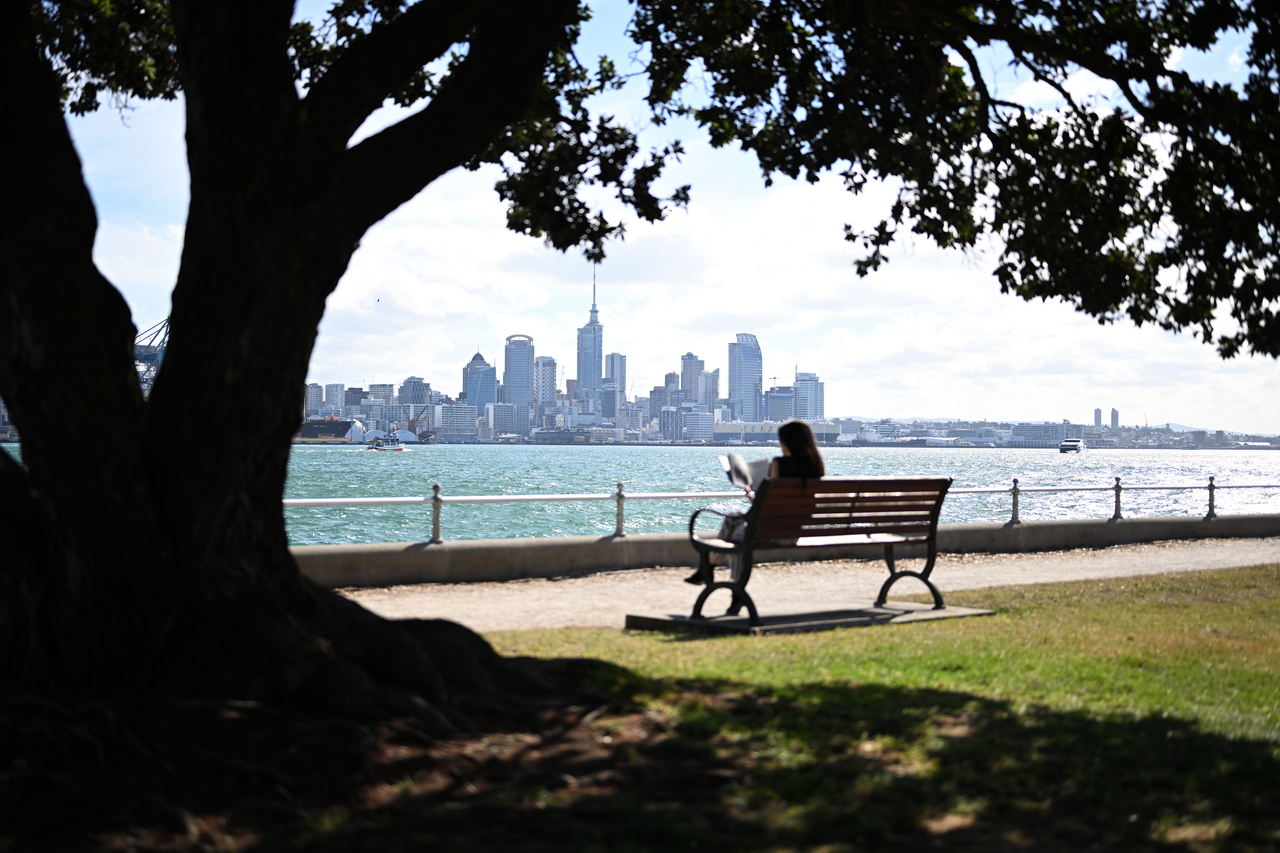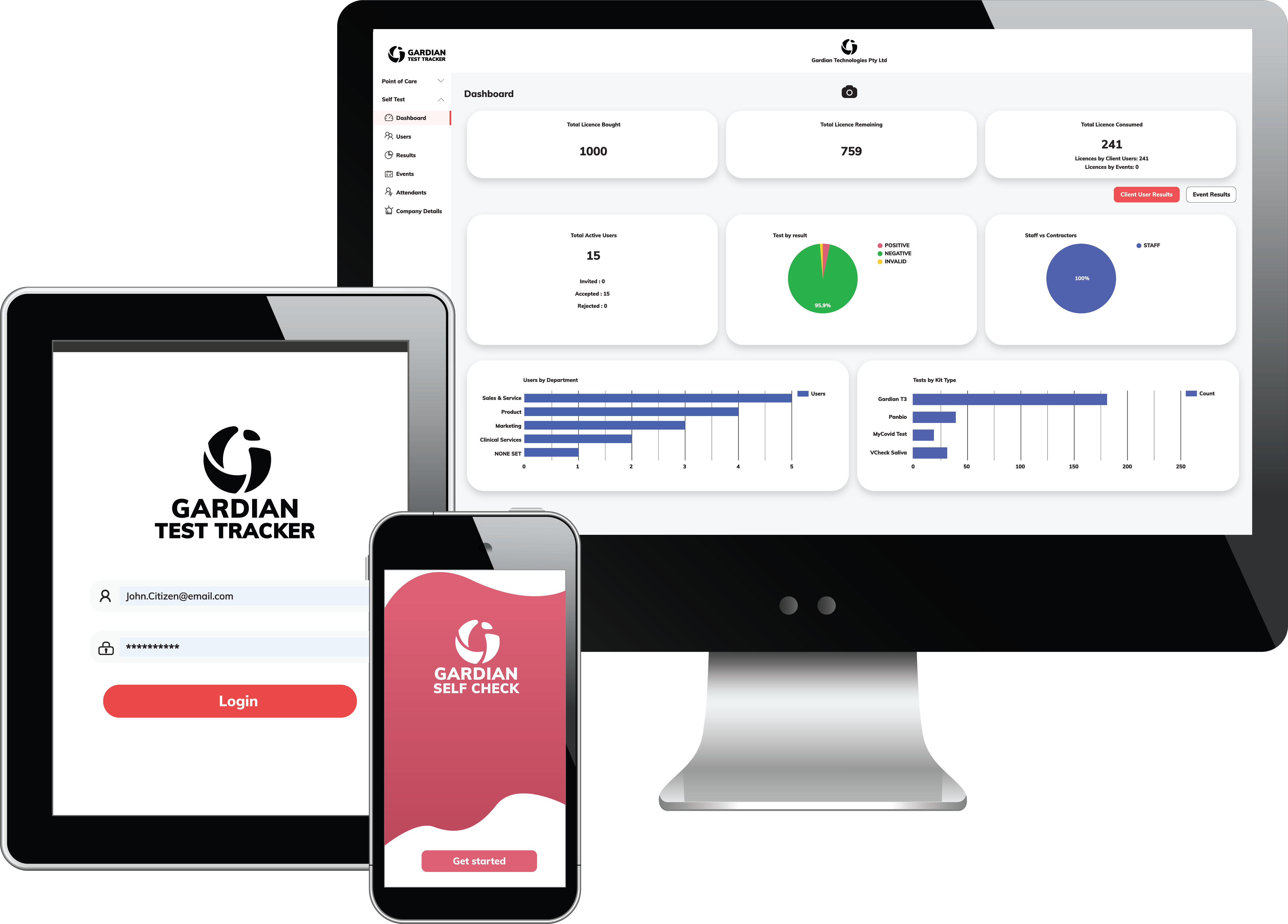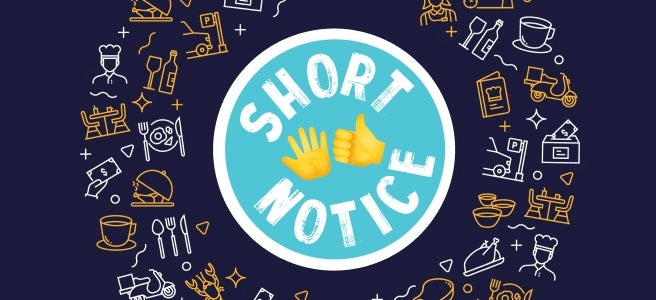How Kiwi SMBs rose to the Covid challenge
Carol Curtin extracts some valuable business lessons and outcomes from arguably the most disruptive pandemic the world has ever experienced. The COVID-19 pandemic presented New Zealand businesses with a scenario […]
Carol Curtin extracts some valuable business lessons and outcomes from arguably the most disruptive pandemic the world has ever experienced.
The COVID-19 pandemic presented New Zealand businesses with a scenario never before experienced. For some businesses the challenge was to ride out the Alert Level restrictions with the hope that there were sufficient cash reserves to cover fixed costs, and be ready to bounce back when life returned to normal – whatever that new normal might look like.
For others, it was not enough to simply hunker down and ride out the storm of uncertainty. Sitting precariously on the edge of viability, they had to re-think their fundamental business operations or market offering, or both.
Early predictions of the impact of the government’s initial lockdown response to COVID-19 were alarming. In April 2020, one week after the government announced its lockdown strategy, the Auckland Chamber of Commerce surveyed 1,000 businesses and found that 30 percent believed they would not survive. At the same time, a survey of 400 hospitality businesses undertaken by the New Zealand Restaurant Association suggested that 20 percent of those in the industry thought they would not survive.
More particularly were the concerns of the impact on small business. Making up 97 percent of all businesses in New Zealand, these small businesses employ 30 percent of New Zealand’s working population and are responsible for around 27 percent of New Zealand’s GDP.
The concerns for the impact of COVID-19 on small business were validated early on. In April 2020, revenue earned by small businesses fell on average by 34 percent compared to the previous year. Acknowledging this, the government moved quickly to disperse its wage subsidy package, enabling cashflow dependent SMBs to pay their bills and avoid a knock-on effect for the rest of the economy.
Fast forward to 2021, and we now have narratives informing us of how numerous businesses responded in multifarious ways to the challenges that emerged both during and post lockdown. We are also in possession of several quarters of statistical data reporting on GDP, unemployment, and growth. With some of the data surprisingly favourable, it would not be unreasonable to imply that some of these diverse and varied responses may have contributed to the better-than-expected shape of our economy, almost one year post-lockdown.
The impact of COVID-19 on the New Zealand economy has largely been reported through measurement of national output. Early predictions of unprecedented GDP decline were dire and ultimately substantiated as GDP fell in the first quarter to a record low quarterly decline of 11 percent. This demonstrates the immediate impact of the lockdown on productivity, output and earnings. However, GDP rebounded in September 2020 with a 14 percent increase.
This astonishing quarterly growth in GDP is the strongest on record and shows that New Zealand had returned to pre-COVID-19 levels of activity.
In terms of unemployment, early predictions by Treasury put unemployment rising from four percent to 13.5 percent. However, while unemployment did rise to 5.3 percent in the September quarter of 2020, by the end of the last quarter the seasonally-adjusted unemployment rate had dropped back to 4.9 percent.
The ability for New Zealand to emerge from the catastrophe of 2020 in better shape than many other economies has gained international attention and, no doubt, envy from other countries. A review by the credit ratings agency S&P Global stated that the recession would be uneven across the Asia Pacific region, but notably identified New Zealand as being one of the countries to escape with less permanent damage. The agency cited New Zealand’s ability to reopen its face-to-face service activities and a well-targeted economic stimulus package as contributing to this outcome.
Let’s look at some of the ways in which Kiwi businesses, and to some extent consumers, responded to the crisis that may have contributed to this better than expected economic position.
Pivoting in a pandemic
Faced with the inevitability of certain demise, some businesses used the pandemic as an opportunity to re-think business in a number of ways. How could they still carry out their business in a lockdown environment? What else could they produce, manufacture and/or provide given their current resources?
Perhaps the most important question of all, in the new COVID-19 world, what did their customers actually need or want?
Adapting or re-purposing existing resources to provide products or services for new or existing markets is referred to as ‘pivoting’. This approach proved to be a viable, even lucrative option, particularly for those businesses able to identify customer needs, move fast and adapt their resources to deliver a new and desirable offering.
Hence, the reporting of many inspirational stories of pivoting undertaken by businesses as a direct response to the COVID-19 pandemic over the past year.
Waikato Brewery Good George mobilised quickly and produced 1000 litres of hand sanitiser from the very same distillery it used previously to make spirits – a very clever and innovative use of the resources and capability that the company already possessed. Calling the initiative ‘Operation Helping Hands’, it began with the owners wanting to protect their own workers.
On their website, these founding owners stated that after deciding to upscale production beyond meeting the demand for their own workers, within one week they went from knowing nothing about hand sanitiser to producing sanitiser to the required WHO standard.
Gisborne’s ‘sea to plate’ business East Rock, which catches and markets tarakihi, and Wairarapa’s Tora Collective, which specialises in crayfish and pāua, also pivoted during lockdown, shifting from selling wholesale to restaurants to direct online sales to consumers nationwide.
Tora Collective’s Claire Edwards says, “We had to create efficiencies in terms of getting it direct to peoples’ doors. Being a live product, you can’t chuck it on the back of a courier, so we had to make sure it’s going from coast to plate, same day.”
The hospitality industry was hit with a double whammy. Customers generated by overseas and domestic tourism halted overnight. Additionally, with the remaining customer base, eateries, cafés, restaurants and bars were unable to seat customers. In order to make operating feasible, these businesses were forced to review the way they operate and streamline their services, as well as migrate to an online space. Many managed the lockdown and avoided becoming a casualty of the pandemic by adapting. Café on Kohi in Kohimarama, Auckland, quickly pivoted by adapting their Kohi Beach Grocer website to include online orders for take-away coffees, hot foods and bakery treats. Customers were able to enter their pick-up time and arrive at the store, their hot goods ready to go.
Prosperity through purpose
The Good George Brewery pivot also compounded to the social . The business hitched a free ride on the ‘good Samaritan’ train. They were one of many businesses who responded to the COVID-19 challenge in such a way that actions contributed positively to a corporate image.
We know that customers are holding brands accountable to higher standards than before covid, favouring those perceived as doing more for society. Pivoting at a time when the nation was in crisis provided an opportunity to demonstrate commitment to the greater need of society. Pivoting provided businesses with opportunities to adopt and demonstrate a ‘prosperity through purpose’ approach.
Fonterra made 250,000 litres of ethanol available to companies making hand sanitiser through increasing production at one of its plants. The co-op then worked with the government to organise distribution to front line workers such as hospitals and police.
The rise of the home business
For some people faced with redundancy, a side hustle or money-generating hobby promised an alternative source of income. With some adaptation and innovative thinking, shifting these cottage industries into more viable sources of income became a trend. This appears to be the case particularly for many women.
Sarah Colcord, founder of Chooice, a Facebook group, noted that 80 percent of businesses on her ‘selling platform’ were owned and operated by women. According to Colcord, the increasing number of women-led business was a consequence of the 10,000 female redundancies which occurred as a result of the pandemic. Significantly, within four months following lockdown, Chooice became New Zealand’s largest Facebook group, with over half a million domestic and international members. The statistics reporting on new business registrations support this trend. More than 5000 new companies sought registration in 2020.
Some may remember Jacinda Ardern wearing a pair of distinct, very kiwiana earrings at a COVID-19 media briefing in April. The earrings made from up-cycled rubber were the brainchild of Auckland graphic designer Ronja Schipper. Ronja stated that with clients of her graphic design firm Bureau55 struggling to survive, this fledging side business posed a means of weathering the global financial storm. Following the publicity that occurred, Ronja saw her stock sell-out multiple times.
Another success story involves a Taranaki mother of three made redundant in October last year; the loss of her job resulted in her kick-starting her side-line baking business. Coupled with the increasing popularity of delivery-based food, Sarah Stainhorpe’s “Bout time Brownies’ business is growing. Sarah believes that, for her, redundancy was a good outcome as it gave her the impetus to direct her energies into something she was passionate about.
Shift to support local
From the beginning, in the very first briefings Jacinda Ardern stated, that ‘we are all in this together’ (He waka eke noa). This refrain captured attention worldwide. It contributed to the New Zealand government’s approach to the global health crisis and was lauded by international PR experts as the benchmark for how government COVID-19 communications should be done. The government’s call for unity in tackling the crisis also laid the platform for an almost wartime-like call to nationalism. This ‘taking care of each other’ plea, with the ‘be kind’ sub-text contributed to a collective and individual desire to contribute to the fight against the enemy.
As a consequence of the unifying experience of New Zealand’s lockdown, ‘shop local’ took on a whole new meaning. Consumers knew that making a choice goes beyond just showing support – their dollars could contribute to the health of New Zealand’s economy during this tough time and help a business survive – keeping New Zealanders employed, housed and fed.
Digital shop fronts
Shifting away from face-to-face trade forced businesses to re-think how they could ‘place’ their products and services in the marketplace, given that the marketplace had effectively closed down. This required many to quickly adapt to a doing business in a digital-only world.
This challenge was significant for small businesses. Without the same resources at their disposal as the bigger players, they were most likely to have a smaller online presence or no presence at all. With their customer base decimating in a matter of 48 hours, regardless of their experience or exposure to online trading, they had to get on board.
The demand for shopping online drastically increased in 2020. During the lockdown New Zealand consumers learned the convenience, indeed essential aspect in some cases, of online shopping. Even during Level 4 while only essential products were being sold, e-commerce traffic went through the roof. Research conducted by New Zealand Post revealed that 170,000 adult New Zealanders shopped from e-commerce stores for the first time during the first six months of [W4] 2020. The New Zealand Ecommerce Association reports that in 2020 over 9000 additional New Zealand e-commerce stores started operations.
While retail gurus predict that although this shift to online shopping was driven initially by the pandemic and the ensuing lockdown, it is expected that this will continue as consumers realise the convenience and other benefits of shopping online..
Suggestions that the reduced ability to travel is causing increases in discretionary spending in other areas supports this. With spends of $585m online in November 2020, up 27 percent for the same month last year, it seems shopping online is becoming a preference and a target for spending for consumers.
Where to from here
In a success-fixated economy we tend to ignore the fact that success has a downside. There is a problem with reaching the top of the arc (or curve). There is a tendency as we reach a level of maturity close to the peak we are focused on, to become comfortable, possibly even complacent. Success creates a model which we comply to, makes us inflexible and therefore less likely to grow again.
Just as the Sigmoid or S-curve theory warns, at a point, generally when things are going well, we feel the least inclined to change, and this prevents us from preparing ourselves for the next big ‘thing’ – good or bad.
There is an inflection point, the point at which decisions are made which will determine the future course of the cycle. The more quickly business owners identify this impending critical point, the more prepared they will be to respond appropriately and put strategies in place to ensure the business follows the upward curve, and not the downward.
The COVID-19 crisis has pushed businesses to the inflection point, a point where change must be made in order to maintain growth. For some, the change was as simple as adding online ordering and dispatch to their operations. For others, it required extending their customer reach or, more significantly, re-engineering their market offerings. For another group it required a re-thinking of purpose to include a community-conscious response.
Which response served as the most successful is another area for investigation. What we can say is that each of these approaches tells us that for many New Zealand businesses, there was never an option of doing nothing.
Carol Curtin is a lecturer in the Bachelor of Applied Business program at Western Institute of Technology in Taranaki. She runs a B&B and presented at an AirBnB Conference in LA in 2016 speaking on cultural competency. Email: [email protected]
References:
Collier, P. K. (2020). Greed is dead. Penguin Random House.
Good George Brewing. (2021). Good George. Operating helping hands: A message from our founders. https://www.goodgeorge.co.New Zealand/page/hand-sanitiser/
Delvin, M. (2020, May ns). New Zealand’s comms approach to COVID-19 lauded by International public relations experts. Impactpr. https://impactpr.co.New Zealand/2020/05/New Zealands-comms-approach-to-COVID-19-lauded-by-international-public-relations-experts/
Kea New Zealand. (n.d.). Chooice: Advocating for small business. https://www.keanewzealand.com /chooice-small-business/
New Zealand Post. (2020, December). ECommerce Spotlight December. https://thefulldownload .co.New Zealand/ecommerce-spotlight-december
New Zealand Business. (2020, June 05). Data reveals Covid’s initial impact on small business. https://New Zealandbusiness.co.New Zealand/article/data-reveals-covid%E2%80%99s-initial-impact-small-business
Tan, L. (2020, September 20). Covid 19 coronavirus shuts some restaurants, others see chance for growth. New Zealand Herald. https://www.New Zealandherald.co.New Zealand/New Zealand/COVID-19-coronavirus-shuts-some-restaurants-others-see-chance-for-growth/LNU7GXFLO27ORE3AR6PU32HHHI/
Corlett, E. (2020, April 8). COVID-19: One in five hospitality businesses expects to close permanently. Radio New Zealand. https://www.rNewZealand.co.NewZealand/news/business/413746 /COVID-19-one-in-five-hospitality-businesses-expects-to-close-permanently
Pelletier, N. (2020, June 29). New Zealand economy predicted to emerge from COVID-19 bettter than most. Radio New Zealand. https://www.rNewZealand.co.NewZealand/news/business /420063/New Zealand-economy-predicted-to-emerge-from-COVID-19-better-than-most
Hall, M. (2020, April 30). PM’s earrings help fledging jewellery firm through fnancial downturn. Radio New Zealand. https://www.rNew Zealand.co.New Zealand/news/national/415515 /pm-s-earrings-help-fledgling-jewellery-firm-through-financial-downturn
Scoop Media. (2020, November 18). Increase in Demand for Online Shopping in New Zealand. https://www.scoop.co.New Zealand/stories/BU2011/S00333/increase-in-demand-for-online-shopping-in-new-zealand.htm
Statistics New Zealand. (2020, December 17). Quarterly GDP bounces back, but COVID-19 still a drag on annual growth. https://www.stats.govt.New Zealand/news/quarterly-gdp-bounces-back-but-covid-still-a-drag-on-annual-growth
Statistics New Zealand. (2021). Unemployment rate. https://www.stats.govt.New Zealand/indicators/unemploymentrate?gclid=EAIaIQobChMIxe7Zx8HO7gIVFBwrCh13uQciEAAYASAAEgJZGfD_BwE
Stuff.co.New Zealand. (2020, April 12). Adapt or die: How businesses have pivoted to keep working during coronovirus lockdown. https://www.stuff.co.nz/business/120875827/adapt-or-die-how-businesses-have-pivoted-to-keep-working-during-coronavirus-lockdown
Foon, E. (2021, January 19). More women taking leap into entrepreneurship during COVID-19 era.Stuff. https://www.stuff.co.New Zealand/business/300209327/more-women-taking-leap-into-entrepreneurship-during-covid19-era
Mcilraith, B. (2021, February 4). Mother made redundant starts brownie business, fulfilling 20-year dream. Stuff. https://www.stuff.co.New Zealand/business/124121856/mother-made-redundant-starts-brownie-business-fulfilling-20year-dream
Strong, E. (2020, June 19). Embracing an online-first world: How lockdown changed the game for small business . The Spin Off. https://thespinoff.co.New Zealand/partner/visa/19-06-2020/embracing-an-online-first-world-how-lockdown-changed-the-game-for-small-business/






